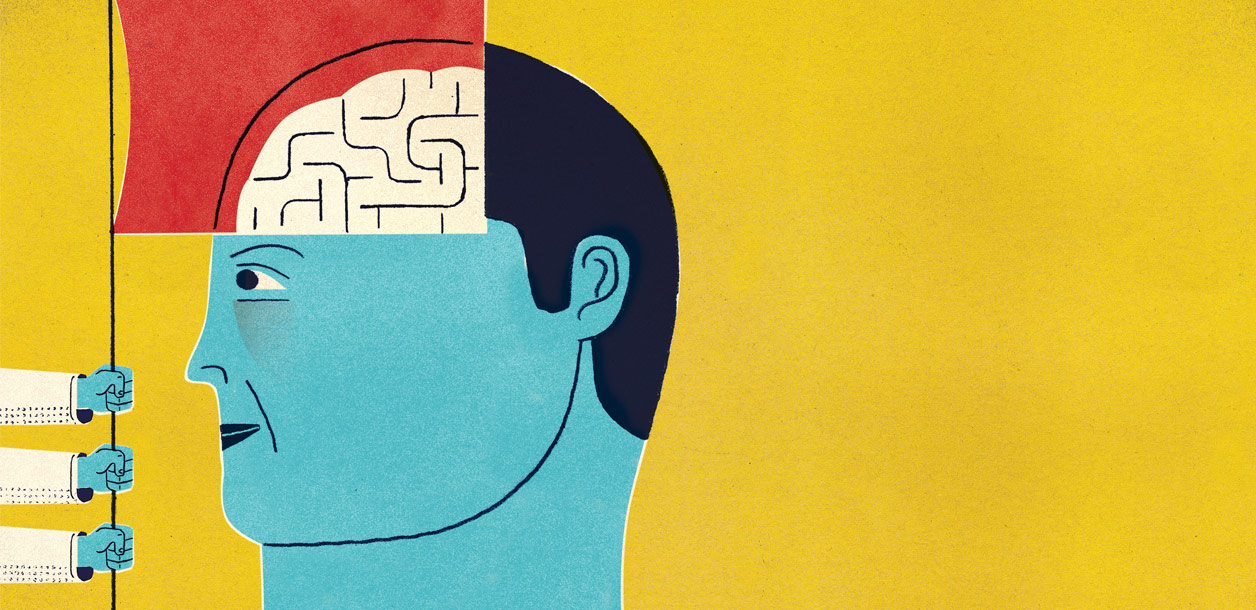UMBC Researchers Explore the New Great Frontier – The Brain
By Megan Hanks
Illustrations by David Plunkert
In the early 1960s, the prospect of being the first nation to plant a flag on the moon stoked America’s collective imagination, leading to a national commitment from scientists, engineers, and researchers – along with their funders – to explore and understand outer space.
In similar fashion, researchers today are scrambling to explore a frontier that’s just as vast, though considerably closer to Earth – the human brain.
“In some ways, what we have right now is an inner space challenge,” explains Karl V. Steiner, vice president for research, who calls understanding how the brain functions “the holy grail” of research. UMBC is playing a major role on this front, employing technological advances – and, often, interdisciplinary approaches – to delve deeply into brain research on topics ranging from pain perception, to mental illness, to the effects of space travel.
“We have committed as a nation to really spend significant resources, money, and people’s time to reach a goal that was unreachable for us a few decades ago before we had tools like fMRI machines, modeling capabilities, and nanosensors” that allow for the measurement and quick analysis of data that previously was not possible.
“Understanding how the brain works will benefit everyone because even though everyone has a brain, no one understands exactly how it works,” he says.
Measuring Stress
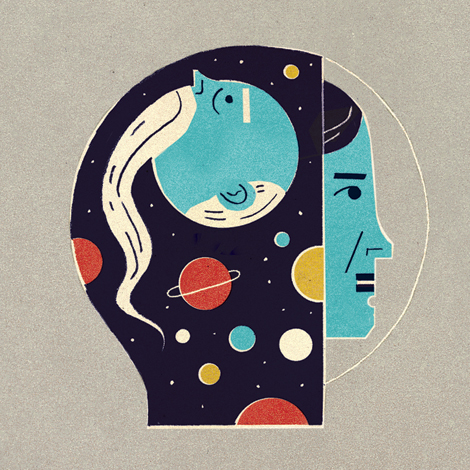
One of the great mysteries of the brain is how it perceives pain and stress. By studying the brains of youth and adults enduring types of social discrimination and physical pain, UMBC researchers hope to make in-roads into early intervention practices for patients.
Raimi Quiton, an assistant professor of psychology who was trained as a neuroscientist, is interested in understanding how pain perception can be impacted by biopsychosocial factors, such as race/ethnicity, gender, age, and socioeconomic status.
“There are large disparities in social group membership or socioeconomic group membership in terms of who develops chronic pain,” says Quiton, explaining that discrimination and marginalization can affect the brain, how the brain processes pain, and how people experience pain.
While studies show that women, African-Americans, and older people experience chronic pain at higher rates, Quiton says that the underlying brain mechanisms of why the risk may be higher for those groups of people is unclear, and the impact of social disparities on the brain have not been widely studied. “The overarching goal of the research is to characterize what is happening in the brain that may predispose certain individuals to developing chronic pain later in life, and to try to identify mediating social factors so that there can be early intervention for at-risk individuals,” she explains.
Quiton also studies how people with healthy brains process pain compared to people with post-traumatic stress disorder. To study the effect of pain on the brain, Quiton uses short, harmless bursts of heat pain and pressure pain on human subjects, evoking a response in the brain that can be observed by Quiton on the screens outside of the fMRI machine. (These types of pain stimuli do not harm the human subject or damage the tissue where the pain stimulus is applied.)
“Lived experience really impacts how the brain functions and how pain is processed,” Quiton said.
Tinoosh Mohsenin, assistant professor of computer science and electrical engineering and director of Energy Efficient High Performance Computing (EEHPC) Lab, recently received a CAREER Award from the National Science Foundation for her work developing deep-learning technology and machine-learning algorithms that can be used in medical and non-medical applications. Deep-learning algorithms are modeled and developed to potentially function like the brain.
Mohsenin is also developing battery powered and cost-effective computing techniques that can monitor brain signals and recognize patterns in brain function. These wearable devices can monitor stress, detect seizures, and possibly identify cancer by analyzing brain waves and image data. “The deep-learning technology can potentially help detect cancer with greater accuracy by providing more information than is found in standard imaging,” she says.
Mohsenin hopes deep-learning technologies will help physicians and medical professionals detect seizures and cancer more quickly and accurately by improving the analysis of highly complex brain signals and data images, beyond what can be gleaned from today’s standard brain monitoring and analysis techniques.
“Current deep-learning models have not been explored for power-constrained smart devices, and this research can potentially revolutionize several fields, including health care, transportation, ecology, surveillance, and public utilities,” she explains.
Mohsenin hopes her work will also help people with significant mobility limitations who use small multi-modal sensors on their tongues as well as other methods to maneuver wheelchairs or command other technologies. More complex algorithms and their efficient hardware implementation can notably improve the responsiveness of such tools for users.
Preventing Mental Illness
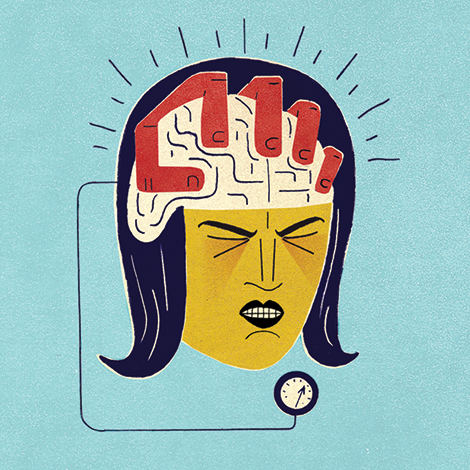
The early identification of mental disorders and illnesses can lead to early intervention and treatment, and help medical professionals provide better treatment and care to patients. Researchers in UMBC’s psychology, computer science, and electrical engineering departments are working to break ground in these emerging areas of work.
Jason Schiffman, professor of psychology, and psychology Ph.D. candidate Caroline Demro are studying the early identification of psychosis among youth ages 12 to 21, who are at risk for the mental disorder in which a person’s thoughts and emotions lose contact with reality. Diagnosing mental illness in individuals early and tailoring treatment plans to individual patients may help prevent mental illness in people who have risk factors that have been identified at an early age.
For people with indicators of psychosis and other mental illnesses – such as the tendency to mistake sounds for voices or objects – the chemical balance within the brain can differ, including levels of dopamine, which helps control the parts of the brain that indicate reward and pleasure. Schiffman and Demro focus on Baltimore city youth who visit the fMRI facility at Spring Grove for mental health evaluations. They use various techniques to determine how the partners’ brains function at a resting state, including what parts of the brain are receiving oxygen, and then ask subjects to answer questions and complete certain tasks while in the fMRI machine to glean insight into how their brains function and what experiences they have had in the past that may signal potential mental illness in the future. Their findings are consistent with research findings from studying adult brains.
“The implications of the illness are pretty pronounced; the human suffering associated with it are hard to overemphasize for many people,” Schiffman says. “That has implications for their ability to work, their ability to find happiness, and it also has implications for our society in terms of people contributing to society through their gainful employment.”
Fow-Sen Choa, professor of computer science and electrical engineering, is one of three faculty who recently received grant funding from the National Science Foundation under the Neural and Cognitive Systems (NCS) program for his work with faculty at the University of Maryland School of Medicine (UMSM) to develop technology that can deliver stimulation to specific parts of the brain. Deep-brain stimulation is an invasive treatment that is sometimes used to help people with neural diseases, such as Parkinson’s, essential tremor, dystonia, and obsessive compulsive disorder. Choa is working to develop a stimulation and monitoring device that will be tested by UMSM researchers on mice – a technology thought to be less invasive than other alternatives.
Choa explains that deep-brain stimulation is typically used as a last-resort treatment when drugs have not been shown to impact the person. The technology he is developing could serve as a tool to help researchers and physicians understand what parts of the brain should be stimulated in individual patients’ brains, and to make modifications and changes to location, frequency, and strength as the operation is in progress.
“If we can find a way to stimulate the brain noninvasively, that is the key,” Choa says.
Crunching the Data
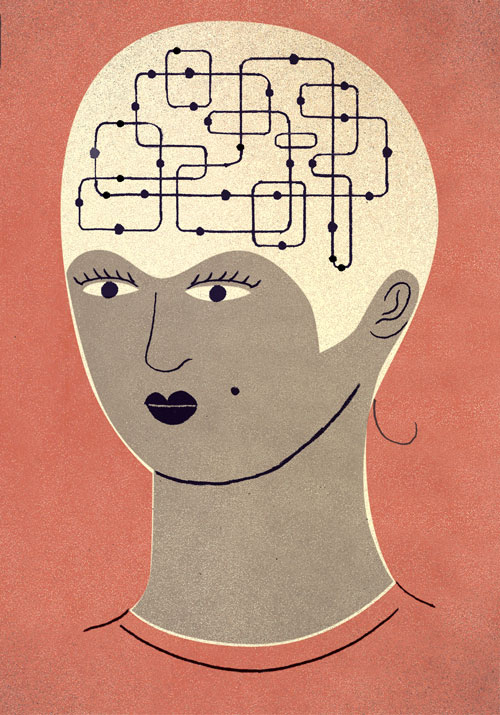
As Steiner alluded to earlier, a researcher can collect all the raw data in the world – but without the means of analyzing it quickly and accurately, the race to understand the brain could be lost. Tulay Adali, distinguished university professor and professor of computer science and electrical engineering, and Seung-Jun Kim, assistant professor of computer science and electrical engineering, are the two UMBC faculty in addition to Choa who received grant funding from the National Science Foundation under the NCS program. They are analyzing data from a control group of people with healthy brains and patients who have been diagnosed with schizophrenia. Kim and Adali have developed an algorithm that can discern how individual brains function, with particular attention to how differences in the brain can impact treatment plans from person to person. The large datasets that Kim and Adali are studying will help physicians make treatment decisions based on the data, when symptoms first appear.
“There is a great need to effectively capture subject-specific traits,” says Adali, who stresses the importance of balancing prediction accuracy and reproducibility. “This is the key step for developing strategies for individualized therapy, intervention and forecasting – of disease and addiction.”
Adali and Kim are collaborating with Vince Calhoun Ph.D. ’02, electrical engineering, a professor of electrical and computer engineering at the University of New Mexico, and executive science officer at The Mind Research Network in Albuquerque, New Mexico. Adali advised Calhoun while he was completing his Ph.D. at UMBC.
Calhoun explains that brain data is stored around the world and is used for many types of research. Typically, for large sets of data to be analyzed, the data has to be compiled in one central location, a challenge for researchers. The method that Adali, Kim and Calhoun are working on will allow brain imaging data to be processed where it is by sending data summaries and decentralizing the data processing.
“There is so much data available today that new approaches that can leverage advanced multivariate algorithms to extract and draw information from brain networks without actually moving data from its various locations are greatly needed,” says Calhoun. “The ability to capture brain networks that show common characteristics across individuals while also fully leveraging the individual aspect of each brain will advance the field considerably.”
And Now, Back to Outer Space
Traveling and spending time in outer space can have long-lasting effects on the human body, due to lack of gravity and other factors, but the brain can be especially impacted by exposure to radiation – especially over time. That’s where Bernard Rabin, professor of psychology, comes in.
NASA has funded some of Rabin’s research to explore the lifetime limits of exposure to radiation in the atmosphere and the ways the human brain is impacted by this radiation. Astronauts who travel to the International Space Station are exposed to a limited amount of radiation; however, exploratory missions that take astronauts beyond that expose them to higher levels of cosmic rays and high-energy radiation that can cause damage to their brains and even accelerate aging in the body and the brain, Rabin explains.
“The changes we see in neuronal function and cognitive performance [after space travel] are characteristic of those changes that we see in older organisms,” says Rabin, whose work focuses on rats. He explains that when astronauts are being selected for space missions, it is important to tell them about the possible consequences of radiation exposure so they can make informed decisions.
“Informed consent is one of the key issues that astronauts need to be told,” Rabin says. The major effect of exposure to space radiation during exploratory class missions lasting up to three years may be an accelerate of the aging process, which may affect the quality of life after the conclusion of the mission.
Looking Forward
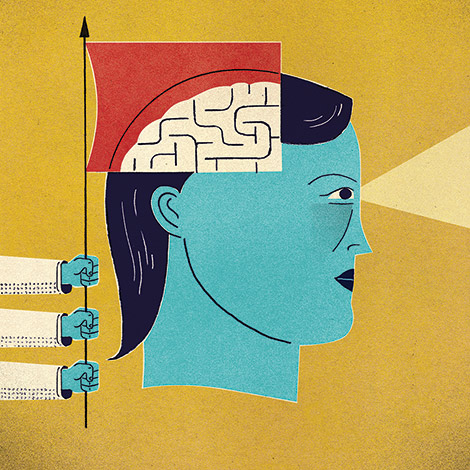
Steiner says that the new Interdisciplinary Life Sciences Building scheduled to open in summer 2019 will give faculty and students new tools and collaborative space to continue studying the brain. Set to begin construction this year, the 130,000 gross square foot building will support course redesign with dynamic high-technology classrooms, seminar rooms, and teaching labs; and support interdisciplinary research with twelve shared labs and other support labs to provide unique opportunities for new study.
“There are tremendous opportunities but also very big challenges to overcome [in brain research],” says Steiner. “These are not easy questions, and because they are not easy questions, you have to draw on groups of experts that focus on the particular question you are trying to study, understand, and solve.”
Related: Creating a “Pacemaker” for the Brain: Dr. Kaf Dzirasa ’01, chemical engineering
Sidebar: Next-Level Tools
Down the road from UMBC, in an unassuming gray building on the Spring Grove Hospital campus, lives a technology integral to much of UMBC’s brain research — a functional magnetic resonance imaging (fMRI) machine. Shared by UMBC, the University of Maryland, Baltimore, and the University of Maryland School of Medicine and its department of psychiatry, the fMRI tracks how water moves in the brain, indicating the flow of blood and activity happening within the brain as subjects complete tasks within the machine’s scanning chamber.
Peter Kochunov, research associate professor of physics and deputy director of the Center for Brain Imaging Research, runs the fMRI technology at the Maryland Psychiatric Research Center. He explains that fMRI is used for a wide range of research focuses, often collaborative, including obtaining quantitative information that can shed light on psychiatric illnesses and genetic risk factors that may predispose someone to these illnesses. Without it, many UMBC projects would not be possible. “Having an fMRI machine within walking distance is a really added benefit to us and our campus,” says Steiner.
Tags: Bernard Rabin, brain research, CAHSS, Caroline Demro, COEIT, fmri, Fow-Sen Choa, Jason Schiffman, Karl Steiner, Peter Kochunov, Raimi Quiton, Seung-Jun Kim, Spring 2017, Tinoosh Mohsenin, Tulay Adali, Vince Calhoun

